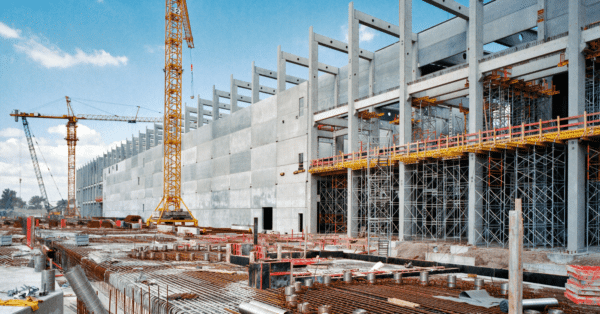“Better to be wise by the misfortunes of others than by your own.” – Aesop
Getting an education in the intricacies of managing a complex custom home construction project can be a very expensive process. Building your dream home can be exciting and creatively fulfilling, or it can seem like a never-ending nightmare that bleeds you dry, both emotionally and financially. The difference between a good and bad experience typically comes down to two things:
- How prepared you are for the journey.
- How resilient you are when things change.
My mission in this article is to help you prepare for the journey. Even with the best-laid plans, changes and surprises will occur. Whether it’s the weather, contractors, the building department, or countless other factors, one thing is certain: things will change. Some people deal well with change and find opportunities in the dynamics of the situation. For others, the construction process, with all its uncertainties, only leads to disappointment and frustration. The construction game is best played by those who have a clear vision of what they want, as well as an open mind for the possibilities that may emerge. Below are some lessons to help you avoid a custom home construction disaster.
Tips to Avoid a Custom Home Construction Disaster
Lesson 1: Do business with the right people.
This is perhaps the single most important thing that you can do to obtain the best outcome. Spend the time it takes to check references before starting business with anyone. Your architect is a good source for reliable contractors, but don’t just take the architect’s recommendation and stop there. There is a much greater chance of the architect and contractor doing future business together than of either of them working with you again. Know that there is a culture in residential construction of the contractor and architect looking out for each other, sometimes to the owner’s detriment. This could include the contractor paying a “finder’s fee” to the architect or even an arrangement in which the contractor agrees not to charge you for correcting the architect’s screw-ups in exchange for the architect recommending the contractors’ billings for payment. In either event, they are helping themselves to your money.
I recommend that you start off by developing a list of three prospective contractors. Request from each of them an outline of their qualifications and references. Put together an interview committee made up of you, your architect, and a friend whose opinions you really respect. Ideally, this would be someone who is in the construction business or someone who has been through the building process themselves. Be sure to check their contractor’s license status by going to the California Contractors State License Board (CSLB) before proceeding further.
Lesson 2: Bid or negotiate?
Most of the best custom home contractors will not participate in a simple bid project. These folks don’t need to, since they typically have enough business without bidding. However, you can still get a very competitive cost for custom home construction by “bidding a negotiated contract.”
How to Bid a Negotiated Contract
- First, understand that we are looking to enter into a negotiated Guaranteed Maximum Price (GMP) contract. This is a commonly used delivery method for private work, in which you can engage the contractor early in the design process and pay them for the cost of construction plus a fee for their services. The American Institute of Architects (AIA) has a good contract to use for this, which is called “AIA A101 2007,” which you can find online.
- Next, go to the contractors you have interviewed and feel most confident in (from the process in Lesson 1) and request that they give you a quote on:
- Fee they would charge on top of cost
- Time of construction based on the conceptual plans
- Mark-up on change order work
- Rates they would charge for any of their self-performed labor
- Cost they would charge for “General Conditions” (the cost of project supervision and all temporary facilities, temporary toilets, fences, etc.)
- Be sure to stipulate that you intend to use the AIA A201, 2007 and that you expect them to obtain at least three quotes from all major subcontract trades.
There are many construction delivery methods that can be used, and many variations and strategies. Never enter into an open-ended “cost plus” arrangement without a Guaranteed Maximum Price or a well-defined process to get to one.
Lesson 3: Negotiate the right contract terms.
The process of custom home construction is a virtual orchestra of diverse talents, working together for the first time, to create something that is unique and has never been assembled in this form before. They are all looking out for their own interests first and they all want your money. They all have the objective of getting considerably more of your money than what it will cost each of them to produce their contribution to your project. In some periods of time, there are more contractors than there are construction projects. In other periods, there are more projects than there are contractors. Your ability to get the most for your money is a function of the period of time in which you are buying and how well you negotiate the deal.
There is an old saying in construction contracting: “The owner gets to play offense until they sign the contract; after that, they only get to play defense.” So, make sure you have left yourself in the best position possible when you sign the contract.
Tips on Contracts with Your Contractor
- Never do an open-ended “cost plus” agreement. If the total scope and cost are undetermined, then contract in phases for work that can be determined. If you must go “cost plus,” be sure you have defined the project cost and what is covered in the contractor’s fee. Also, nail down the rates that will be charged for any labor and the process that the contractor will use for obtaining subcontractor quotes and material purchases.
- Never simply default to the contractor’s form agreement. It is written to protect him, not you. There are many very good industry standard agreements out there that you can review and learn from. The AIA has developed perhaps the most commonly used form agreements in the industry.
- Have the contractor indemnify you, hold you harmless and defend you from all losses arising out of his work. If you don’t know what this means, consult your attorney or read up on the subject. When something goes wrong on the project, someone gets hurt or there is a serious defect with the construction later, this clause and the insurance provisions may be the most important paragraphs in the contract.
- Be sure the contractor has good general liability insurance and that you are named as an additional insured under his policy. You should also make certain that the General Contractor requires all subcontractors to have proper insurance and that all of them name you as an additional insured as well. Have your insurance agent review the general contractor’s insurance coverage.
- Be sure you have a property loss policy on the construction project. This is referred to in the industry as a “Builder’s Risk” policy. I recommend that this coverage be purchased by the owner and not the contractor. This policy will cover the project for property loss, such as fire, while under construction and should be discussed with your insurance agent.
- Be sure to stipulate a project completion time and liquidated damages in the event that the project takes longer than anticipated to build. Stipulated liquidated damages are a set cost per day, reflecting your costs should the home not be completed per the contract completion date. These costs usually include things like the costs for alternative living arrangements, interest charges for the construction loan and property taxes.
- Look carefully at the termination language and have an open discussion with the contractor regarding what happens if this deal doesn’t work out, if you decide to terminate before construction starts, or if you or the contractor gets hit by a bus, etc. I know it is honeymoon time and everyone is looking at the world through rose-colored glasses, but contracts are much easier to get into than to get out of.
- Never pay a big upfront deposit or other upfront payment to a contractor – never! The California Contractors License Board (CSLB) limits upfront payments to a contractor to 10% of the contract or $1,000, whichever is less.
Lesson 4: Payments to the Contractor.
Contractors, subcontractors, and material suppliers who perform work or send materials to your project have lien rights to your property. Basically, if you pay your general contractor and that general contractor fails to pay his subs and suppliers, those subs and suppliers can lien your property and you may have to pay them directly to remove the lien – even if you have already paid the money for the work to the general contractor. There are basically two ways to avoid this risk:
- Require that your General Contractor provide a “Payment and Performance Bond.” You will need to pay for this bond, which protects you from failures of the contractor to perform the work or failures of the contractor to pay his subs and suppliers. It is fairly expensive and will cost about 2% of the contract price. The cost goes down based on the financial strength of the contractor and the contractor’s bonding history. Even if you don’t intend to require a bond, it may be a good idea to ask your perspective contractor to tell you their bonding rate. The rate itself is very telling. Many residential contractors do not have a history of bonding, so they may not be able to bond the project.
- “Fund Control” is another alternative to protect you from a contractor’s failure to pay his subs and suppliers. This is a service in which a company, such as Dixieline Fund Control, will disburse payment vouchers to contractors upon your approval of the work. The fund control company will collect the proper lien waivers from the contractors and help to protect you from liens against your property. Fund Control is much less expensive than a bond and is typically required by construction lenders.
The contractor has a right to require some form of assurance that you have the ability to pay for the construction. The fund control process is also a good way to provide that assurance. The fund control will require that funds are secure in an amount to cover the contract for construction and will provide a process for line-item budget management for the project.
Lesson 5: Change orders.
As I’ve stated before, one thing is certain in construction: things will change. The contract provides for a cost and time for construction based on the construction documents, plans, etc. Changes will occur primarily due to:
- Errors and omissions in the plans
- Unforeseen conditions
- Regulatory agency directives
- Elective decisions by the owner
Basically, the contractor is responsible for making reasonable anticipation of the project requirements. When things occur beyond reasonable anticipation, the contractor is entitled to receive a reasonable adjustment in the contract price and time. The work will cost quite a lot more when it occurs due to a changed condition, as compared to what the same work would cost when it is purchased as a part of the base contract. Project studies have shown that the premium for change order work is around 40% or more than base contract work, which is due to the inefficiencies in buying and administering change order work. The volume of change order work can be mitigated by:
- Allowing ample time to develop, review and conduct a peer review of the plans.
- Making sure there has been ample due diligence in soils investigations and research into past construction on the site to minimize unforeseen sub-surface conditions.
- Spending time with the architect to review the plans and making sure that you have the same vision. (Ask the architect to help you visualize each room, study the orientation of the structure on the site for view corridors, etc.)
When changes do occur, follow the process outlined in the contract for administration of the changes and make sure all changes are in writing!
Lesson 6: Administering the construction process.
The AIA contract does a pretty good job of outlining the process for administering the construction contract. Some architects are good at contract administration and some are almost worthless. There are also “owner advocates” or “owner’s representatives” out there who can help administer the process. A few key concepts in contract administration can go a long way in keeping you out of trouble.
- The AIA contract has an attachment (AIA A201) which is referred to as the “General Conditions to the Contract for Construction.” It sets forth how to deal with payment, change orders, etc., and if followed, will be very helpful in keeping the project out of trouble.
- Have regular team meetings at the site with the contractor, architect and owner present. Document the meeting with written meeting minutes that establish:
- Each issue discussed
- Who is responsible for each action
- When the action is due
- At the end of every meeting, wrap up with a question to the contractor: “Other than what we have already discussed here today, is there anything that is holding you up or that you think will result in any additional cost to the project?” Then, be sure to document in the written meeting minutes the contractor’s response to that question.
- The importance of the written meeting minutes cannot be overstated. He who controls the meeting minutes controls the project and the meeting minutes are often the best written documentation for the project. When a project goes into litigation, the reality established in the written documentation is the reality that counts.
Project issues are more like fish than fine wine; they don’t improve with age and only get stinkier as time goes on. Deal with issues promptly and in writing to keep them from disrupting and dominating the project and will help you avoid construction disasters.
Takeaways
Volumes have been written and careers have been spent exploring the many strategic aspects of effective project and construction management. In this article, I have tried to “dispense with the trivial many, in favor of the critical few” as it relates to staying out of trouble on your custom home construction project. Most contractors will abhor the concept of written documentation, as well as the concept of not only reading the contract provisions but living by them as well. However, I can tell you with certainty that if you follow the concepts that I have outlined here, your chances for a successful project and avoiding litigation will be greatly enhanced.
To learn more about VERTEX’s Construction Contracting & Consulting services or to speak with a Construction Expert, call 888.298.5162 or submit an inquiry.
This article was originally published by Xpera Group which is now part of The Vertex Companies, LLC.








